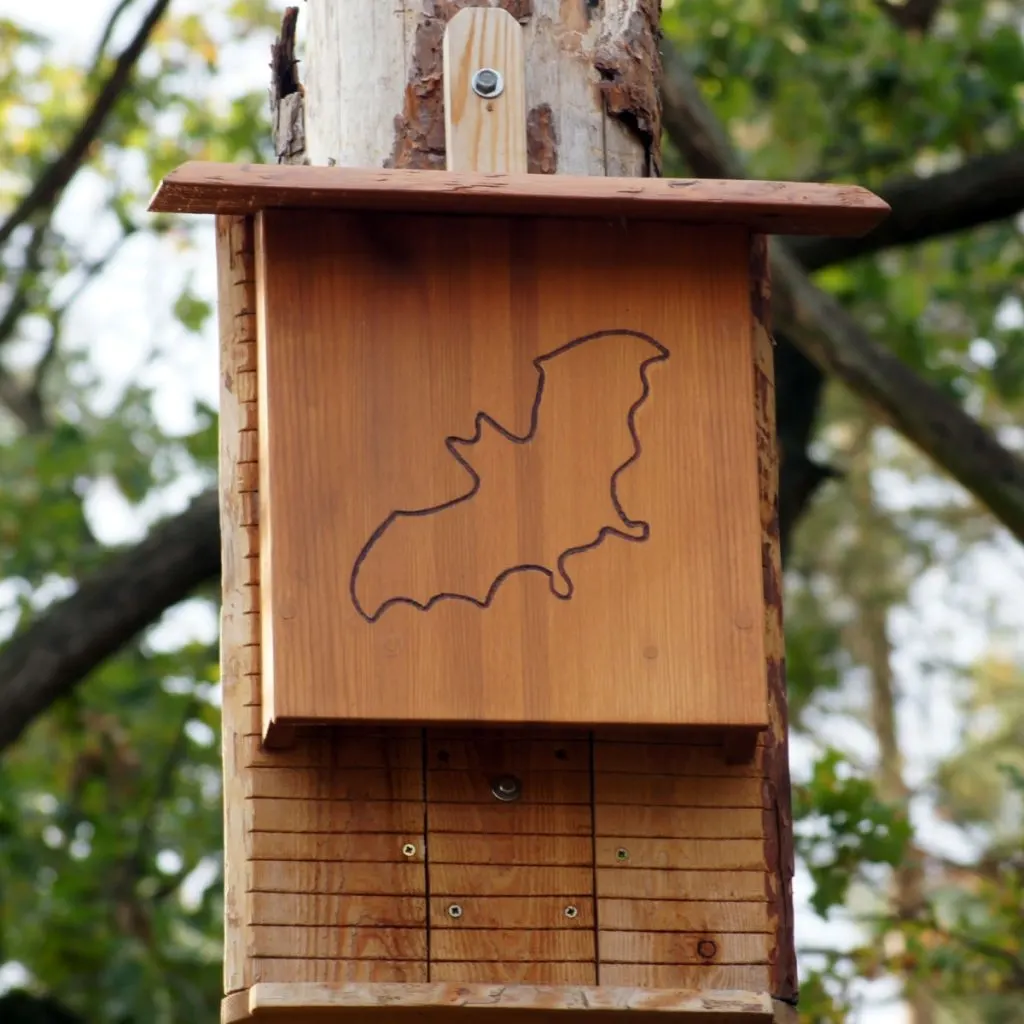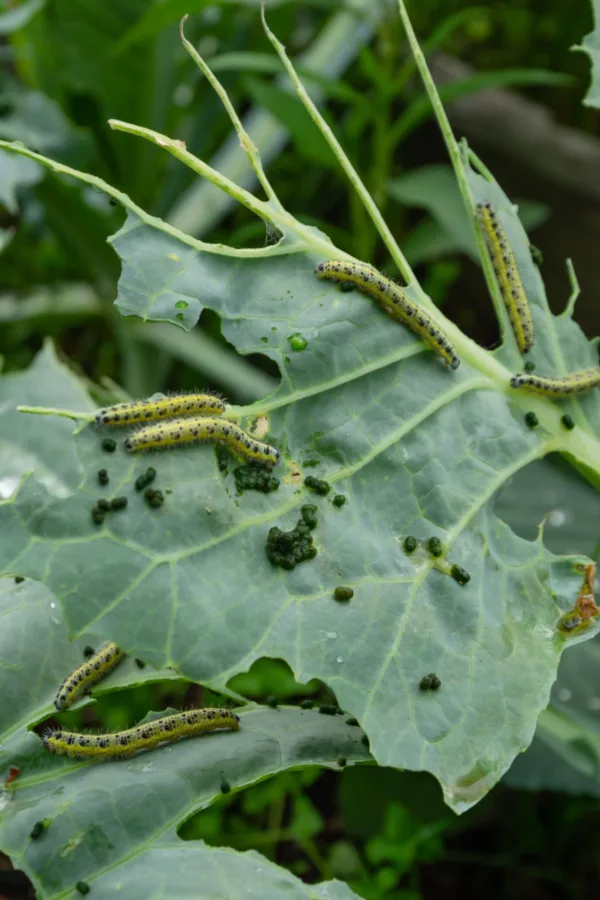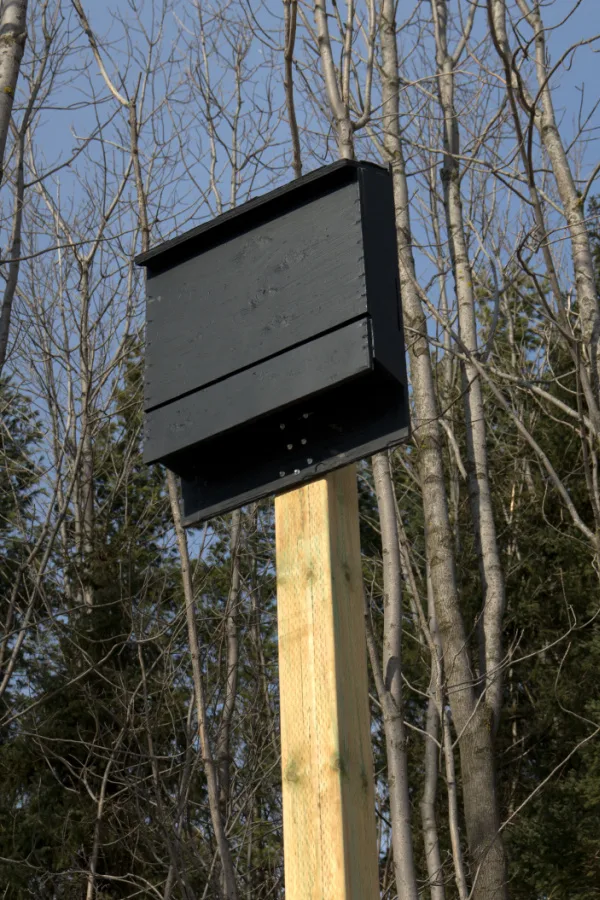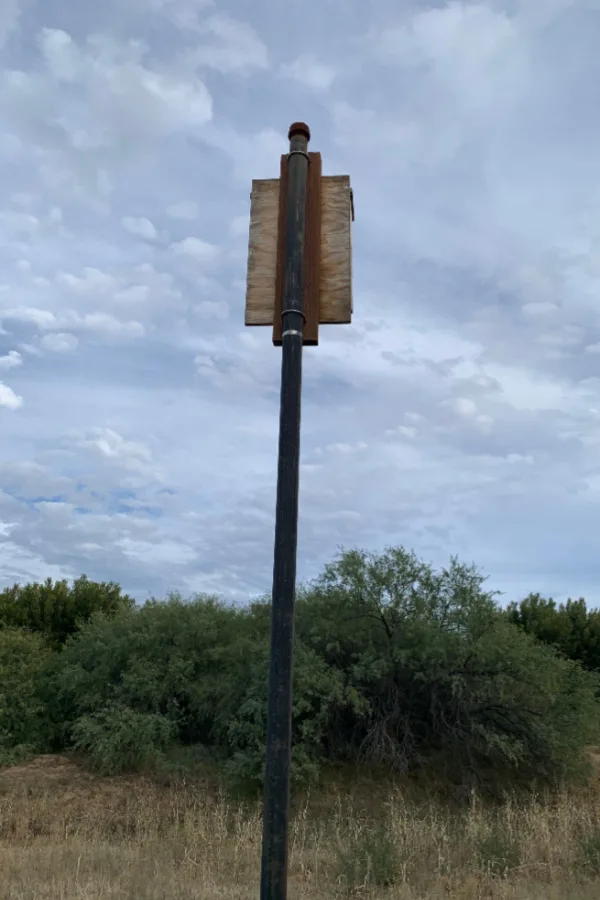If you are looking for a simple way to help control and keep insect and pest populations in check in your backyard – maybe it’s time to consider installing a bat house to attract one of nature’s most veracious insect eaters around – bats!
Bats are actually one of the most beneficial mammals when it comes to natural pest control. In fact, according to the US Fish and Wildlife Service, the flying mammals consume enough pests to save over $1 billion each year in pesticide costs and crop damage alone – and that is just in the US corn industry!
Unfortunately, bats often get a bit of a bad reputation as a backyard resident. But that undeserved reputation couldn’t be further from the truth. As it turns out, not only are they one of the most helpful and beneficial “residents” you can attract, they also happen to be one of the least bothersome of all. Especially when you provide them a home where they can safely live and thrive.

The Benefits Of Attracting Bats
One thing is for certain, despite what you may hear and read, bats are not fond at all of attacking humans or pets. In fact, they avoid them at all costs – using an incredible radar system that keeps them far away from danger while allowing them to track and eat insects at will as they fly about.
At their core, bats are fascinating creatures and are certainly not to be feared. There are over 1400 different species of bats, ranging in size from as small as a bumblebee – all the way up to ones having a wingspan of close to 6 feet across.
Only around 45 of bat species call the United States and Canada home. But you can find bats on almost every part of the planet except for the far polar regions and harsh desert landscapes. But where they do live, can they ever help out in so many ways!
Each night, bats consume an almost unbelievable amount of insects. Mosquitoes, crickets, leafhoppers, and moths are all at the top of a bat’s dinner list. As are common garden pests like hornworms, slugs, cabbage worms, aphids, and many different types of beetles.

Pest Control – How To Attract Bats With Bat Houses
Believe it or not, some small bat species can eat around 1,000 small insects in just a few hours. Nursing mothers consume even more at around 4,000 an hour! That’s a lot of insects to keep away from you, or from bothering your garden plants!
With all of that eating prowess, it’s easy to see how helpful bats can be. But sadly, in many areas, bat populations are declining.
It is thought that pesticides are certainly high on the list of culprits, making bats far more susceptible to disease and other issues. But in addition, as more land is cleared, there are far fewer places for bats to find a home. Which, of course, is all the more reason helping them re-establish is a win for your landscape, your plants, you – and the bats!
How To Attract Bats With Bat Houses
The good news is that attracting bats isn’t difficult or time consuming. In fact, success really comes down to giving them a safe place to call home. And with bats, that can be as simple as installing a bat house or two in just the right location!
Bat houses have a few special characteristics that cater to attracting the unique mammals to take up residence. For starters, to be successful, a bat house needs to be slim and measure only a few inches deep. This thin design provides warmth for the bats and helps to keep them feeling secure.

In addition to a thinner design, bat houses need to have a textured or grooved interior surface. This is important as it gives the bats a sturdy way of grabbing onto the house for nesting. That is extremely important to keeping them safe while they sleep hanging on!
You can purchase commercially made bat houses, or you can easily make your own. Either way, it is vital to have the houses meet the above standards, or the bats simply won’t take up residence. (Affiliate Product Link: KIBAGA Ultimate Wooden Bat House)
Properly Installing A Bat House
Contrary to what you might think, using a bat house will not invite bats to move into your house. In fact, it will likely help to keep them OUT of your house! When they can find suitable digs away from humans, they will be far happier to take up residence there.
Once you have your bat house in hand – the final piece of the puzzle is to locate it in just the right space. How and where you install the house will make a big difference in whether or not bats will actually make it their permanent home. When locating a bat house, the three biggest keys are security, proper height – and proper lighting.
In order to provide enough security, the house needs to be at least 10 to 12 feet off the ground. If available, 15′ to 20′ is even better. The taller height makes it much easier for bats to enter and leave the house easily. Of even more importance, the added height keeps them out of the reach of predators as well.

You can use a long pole or place the bat house against a building wall. When placing against any walls, make sure that predators can’t easily climb over and get to the house. Avoid using tree trunks for the location as it simply gives predators an easy path to the home.
Sunlight Matters – How To Attract Bats With Bat Houses
Last but not least, when installing a bat house, you need to think about how much sunlight the house will get. Just as with most plants, a bat house shouldn’t be placed in a shady location.
Bats enjoy warmer temperatures during the day, so make sure the house receives at least 6 to 8 hours of direct sunlight. An east or south-facing side of your home or property is best. This will give them early sunlight and also provide them the best chance of capturing heat from the sun’s rays.
Also, always avoid placing a bat house near bright lights such as porch lights or security lights. Light pollution can cause issues with nesting bats.

Other Key Things To Remember
Although you can put up a bat house at any time of the year, you will have a better chance of success attracting bats if the house is in place in early spring. By doing so early, the bats can find it before they nest for summer.
Lastly, keep in mind guano, which is the bat droppings or manure that will fall from the house. Bat droppings will start to collect underneath a bat house, so avoid placing it above windows or doorways – unless you want an unexpected surprise!
By welcoming bats to your property by providing them with a safe and comfortable home, you can not only help bats survive, but help control pests for your garden and flowerbeds too! For more on controlling pests naturally, check out our article on attracting bluebirds: How To Get Bluebirds To Stay In Your Yard – The Secrets To Attracting Bluebirds!
Follow Our Facebook Page For Even More Great Tips! Simple Garden Life Facebook Page
Simple Garden Life is a website dedicated to keeping gardening fun, simple and enjoyable! We publish two new articles each week along with a new garden podcast episode every two weeks. This article may contain affiliate links.
